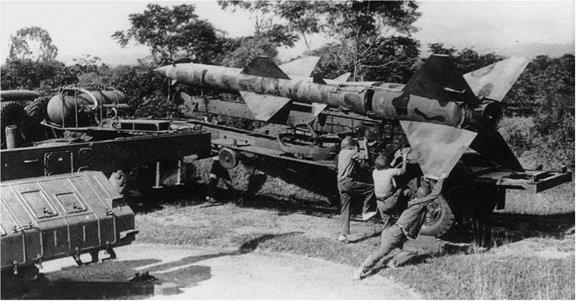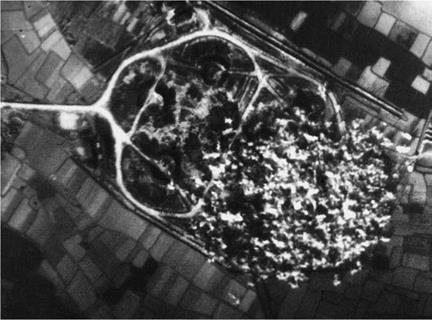COMBAT
Following deliveries of SA-2s from May 1965, the Soviet Union formed North Vietnam’s first missile units. Their organization was based on existing Soviet SAM regiments, and they were located around Hanoi at short notice from June onwards after the training of local operators was abruptly curtailed in response to increased US air strikes. Sites were rapidly prepared, with 64 established by December 1965.
This tally also included a number of fake sites that had been built by the North Vietnamese so that battalions could rapidly move from location to location in a “shell
|

|
|
game” to escape attack. A pattern was evolved in which, as Capt Ashmore of the USAF described it, “Immediate steps were taken to establish a minimum of three alternative sites — each defended by three AAA batteries — for each firing battalion, and any of these sites could be abandoned should they become compromised”.
Although this constant cycle of movement degraded readiness, it reduced the battalion’s vulnerability — and clearing a site for an SA-2 battery only took four hours. The Johnson administration, alarmed at the rapid spread of SAM batteries around Hanoi and beyond, concluded from reconnaissance overflights that sites could be fully set up in only 48 hours. On September 9, 1965, F-105s flying just 12 miles from Laos and 62 miles from Hanoi were fired on by SAMs, thought at the time to be low – altitude SA-3 “Goas”. They were of course SA-2s
Early SAM successes drastically influenced US planning. From late August 1965 strike packages were not allowed within range of sites without Iron Hand support, and for another month SA-2 batteries avoided detection from the air thanks to their mobility.
Nguyen Van Dinh, who was only 18 when he joined the 275th Regiment at the height of the air war in 1967, served alongside early SA-2 crews:
I worked with missile troops who had trained in 1965—66 at the Baku Air Defense District in Georgia. Each regiment had trained there for at least six months. I helped the troops use and maintain the SA-2 systems and assist with weekly, monthly and quarterly checks. I was on sites when they shot down US aeroplanes and when they were attacked. Our soldiers recognized the dangers of the Shrike and could move the missiles to another site to avoid attack, although by the end of 1967 the Americans had indeed destroyed some of our equipment.












